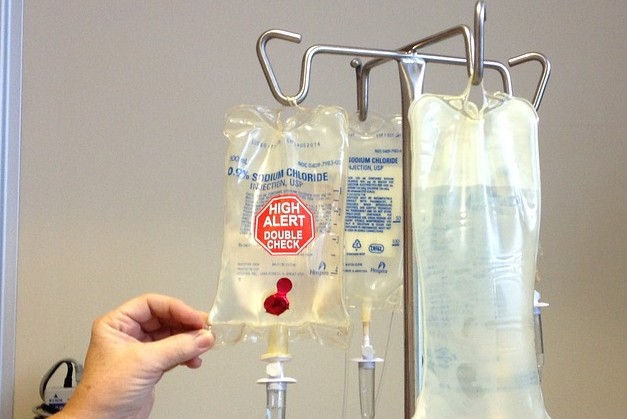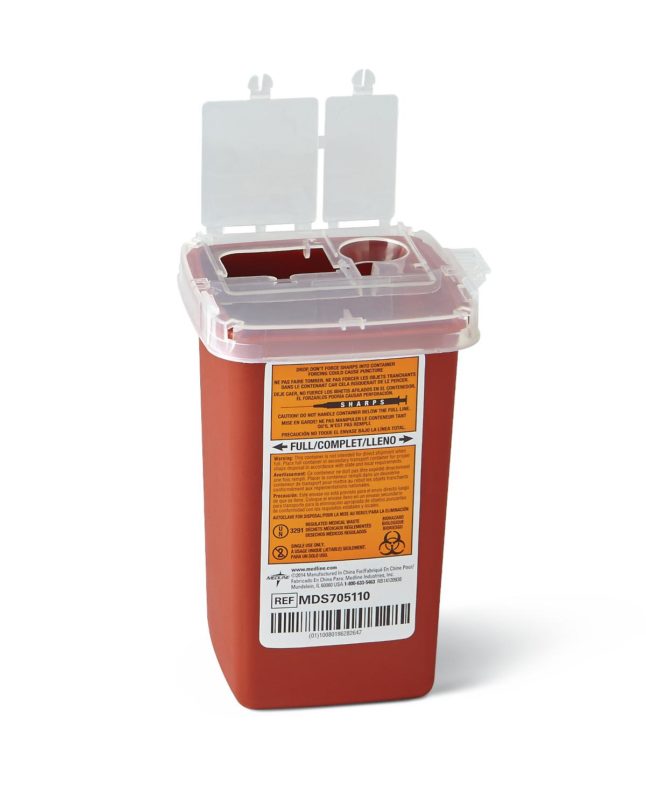Medical Waste Removal Mastery: Where Service Quality Fulfills Health Specifications
Medical Waste Removal Mastery: Where Service Quality Fulfills Health Specifications
Blog Article
Remain Ahead of Laws: Expert Advice on Medical Garbage Disposal
In a world where the medical care sector is regularly progressing, it is necessary for clinical facilities to remain in advance of laws when it comes to the proper disposal of medical waste. With strict standards and frequent regulatory changes, it can be challenging to navigate the complexities of this process. However, with skilled recommendations, centers can make certain compliance and minimize threats related to inappropriate garbage disposal. From understanding the various groups of clinical waste to executing the best collection and segregation methods, this discussion will certainly supply useful insights and actionable suggestions to help facilities stay in advance of guidelines in the ever-changing landscape of medical waste disposal.
Understanding Clinical Waste Categories
Understanding clinical waste categories is essential for appropriate disposal and monitoring in health care facilities. Clinical waste refers to any kind of waste generated by medical care tasks that may posture a danger to public wellness or the environment. It is crucial to classify clinical waste accurately to ensure its secure handling, transportation, therapy, and disposal.
There are several classifications of medical waste that health care centers require to be accustomed to. The most typical groups include infectious waste, pathological waste, sharps waste, pharmaceutical waste, and chemical waste. Each group has specific guidelines and laws for its proper monitoring and disposal.
Pathological waste refers to human cells, body organs, or body parts that need special handling and disposal. Pharmaceutical waste comprises run out, extra, or contaminated drugs that require mindful handling and disposal.
Remaining Up-To-Date With Regulatory Modifications
Staying present with regulatory changes is important for health care facilities to ensure conformity and correct management of clinical waste disposal. medical waste removal. With policies regularly developing, it is vital for medical care facilities to stay up-to-date to prevent fines, penalties, and prospective harm to the environment and public health
To remain ahead of governing modifications, healthcare centers must establish a system for surveillance and tracking updates. This can be done by subscribing to governing e-newsletters, attending workshops and seminars, and proactively taking part in industry organizations. Additionally, centers ought to mark a personnel member or team responsible for staying educated and disseminating information to appropriate stakeholders.
Normal communication with regulative agencies is additionally essential. Medical care facilities must develop connections with neighborhood, state, and federal companies to ensure they understand any adjustments in regulations that may impact their waste monitoring practices. This can be done with normal meetings, engagement in public comment durations, and aggressive engagement with regulative companies.
In addition, health care centers must consider partnering with waste management business that specialize in clinical garbage disposal (medical waste disposal services with WasteX). These companies are commonly fluent in the most recent policies and can supply advice and assistance to guarantee compliance
Carrying Out Correct Collection and Partition Approaches
To properly manage medical waste disposal, healthcare facilities should establish proper collection and segregation techniques in accordance with regulative guidelines. Carrying out these techniques makes certain the safe handling and disposal of potentially dangerous materials, safeguards the environment, and minimizes the risk of infections and injuries to healthcare employees and the basic public.
Correct collection and partition methods entail the usage of assigned containers and identifying systems. Healthcare facilities should give plainly identified containers for different kinds of clinical waste, such as sharps, transmittable waste, pharmaceutical waste, and non-hazardous waste. These containers need to be color-coded and plainly marked to stay clear of complication and promote easy identification.
In addition, health care facilities need to educate their staff on the appropriate treatments for gathering and segregating clinical waste. This includes educating them on the various kinds of waste, the suitable containers to use, and the importance of complying check out this site with guidelines and regulations. Routine training sessions and correspondence course ought to be carried out to make sure that staff members remain updated on ideal methods.
Furthermore, medical care facilities must establish a system for normal collection and disposal of clinical waste. This may involve partnering with accredited waste management business that specialize in medical garbage disposal. These companies will certainly ensure that the gathered waste is carried and dealt with in conformity with regulatory demands.
Picking the Right Disposal Methods

Incineration is among one of the most usual and effective methods for disposing of certain types of medical waste, such as pathological waste and sharps. It includes the controlled combustion of waste at Home Page heats, decreasing it to ash. Incineration can launch damaging contaminants right into the air and contribute to air contamination.

Various other disposal methods consist of chemical treatment, microwave therapy, and landfilling. Chemical treatment entails the usage of chemicals to neutralize the waste and decontaminate. Microwave treatment makes use of microwave energy to warmth and disinfect the waste. Landfilling entails burying the waste in a marked garbage dump location (medical waste disposal services with WasteX). Nevertheless, landfilling needs to be the last resource due to the prospective danger of contamination to dirt and groundwater.
Guaranteeing Compliance Through Documentation and Training
After very carefully taking into consideration the ideal disposal approaches for clinical waste, health care centers need to make sure conformity with guidelines and lessen environmental effect by executing effective documentation and training treatments. This action is critical in keeping a sustainable and safe setting for both medical care employees and the public.

Training is just as essential in making sure conformity with regulations. Medical care workers that handle medical waste needs to get proper training on waste segregation, dealing with, and disposal treatments. This training needs to cover subjects such as the proper use of personal our website safety tools, identification of different types of waste, and the appropriate disposal techniques for each and every waste group. By providing detailed training, health care centers can encourage their team to make enlightened choices and decrease the threat of improper waste disposal.
Conclusion
Finally, remaining in advance of guidelines in medical waste disposal is important for healthcare facilities. medical waste removal near me. Understanding the different categories of clinical waste, remaining updated with regulatory changes, implementing correct collection and partition methods, picking the ideal disposal techniques, and making sure conformity through documents and training are all crucial steps. By following these standards, health care organizations can properly get rid of and handle of clinical waste in a liable and risk-free manner
From comprehending the different groups of medical waste to applying the best collection and partition techniques, this discussion will certainly provide beneficial insights and workable tips to aid facilities stay in advance of regulations in the ever-changing landscape of clinical waste disposal. - medical waste disposal services with WasteX
The most common classifications include contagious waste, pathological waste, sharps waste, pharmaceutical waste, and chemical waste. Health care centers ought to supply clearly labeled containers for various kinds of clinical waste, such as sharps, infectious waste, pharmaceutical waste, and non-hazardous waste. Medical care centers need to develop a comprehensive system to tape-record and track all facets of clinical waste disposal, including kinds of waste produced, quantities, and disposal techniques utilized. Health care workers who deal with medical waste ought to get suitable training on waste segregation, handling, and disposal procedures.
Report this page